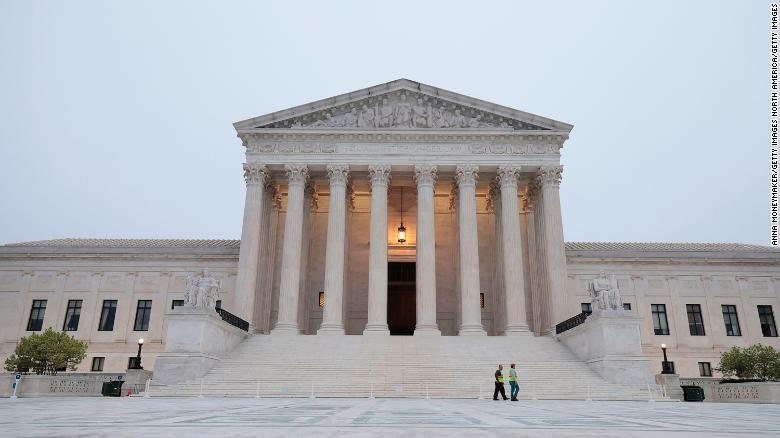The central paradox of the abortion debate is that the red states racing to outlaw or severely limit the procedure may be the places least prepared to deal with the practical consequences of the new restrictions. And that, experts project, could mean significantly more infant and maternal deaths and childhood poverty in states that, as a group, already rank at the bottom on those critical outcomes for kids and families.
New research shows that the states banning abortion could see up to hundreds of thousands of new births each year, most of them unplanned, and concentrated among lower-income families already facing the greatest financial and health care challenges. Social scientists have consistently found that those unplanned pregnancies tend to produce worse outcomes for kids and mothers — and, with abortion prohibited or severely limited, they now will be rising precisely in states, including most of the South, that traditionally have invested the least in health, education and other social supports for families.
“It is as if somebody came down with a magic marker and circled the states least equipped to deal with an abortion ban and with the largest percentage of their population falling into the most elevated risk categories,” says Sara Rosenbaum, a professor of health law and policy at George Washington University, who helped organize an amicus brief in the abortion case from over 500 social scientists.
“So, you are setting up a prescription for phenomenal effects in terms of maternal mortality, infant mortality, infant low birthweight, all of the risks that follow from these kinds of [unplanned or unwanted] pregnancies.”
Especially frustrating for social scientists is that while the majority opinion from Justice Samuel Alito overturning Roe v. Wade reached so deeply into history that it cited “Henry de Bracton’s 13th-century treatise” on abortion, the ruling said nothing about the real-world effects today of allowing states to ban or severely restrict the practice. “This is what I can describe only as the horror of this all, which is that the court utterly disregarded, as did Mississippi, the practical health implications of what it was doing here,” Rosenbaum says.
Among the most ominous outcomes is that social scientists project the number of women who die from complications in childbirth could increase by double digits in the states banning abortion. In a new paper, Amanda Jean Stevenson, an assistant professor of sociology at the University of Colorado at Boulder, and two co-authors projected that maternal mortality would increase by 14% in the 26 states expected eventually to ban or severely restrict abortion.
Stevenson, in an interview, said that was likely a conservative estimate because it is based on the states’ overall rates of maternal mortality and the additional births after abortion is banned would be concentrated among lower-income women who traditionally face the most health risks during pregnancy. Another factor that could increase maternal mortality rates, Stevenson says, is that care may be delayed as doctors seek legal guidance before treating miscarriages or ectopic pregnancies for fear of violating the new abortion limits. “They will have to wait longer for people to be sicker before they can justify life-saving care,” she predicts, and the same legal fears may cause pregnant women to delay seeking care as well.
Linda Goler Blount, president and CEO of the Black Women’s Health Imperative, said in an interview their research forecasts that the number of Black women who die from childbirth could rise by fully 33% with Roe overturned. Poverty rates could increase as much as 20%, the group projects. “Lives will be lost, just from the death in and around pregnancy, but also those deaths of despair when you get another generation of people into poverty,” Goler Blount says.
Like many anti-abortion advocates, Patrick Brown, a fellow at the Ethics and Public Policy Center, a conservative think tank, pushes back by arguing that whatever the consequences, “is it better for the baby not to be born at all?” as he put it in an interview. But he acknowledges “the social outcomes…wouldn’t be great” if the states banning abortion don’t provide more help for women and children. “Now that Roe is gone and states have the opportunity to protect unborn life,” Brown says, “it really increases the moral obligation for Republican-dominated states to make sure that women … have the resources they need to be able to carry that child to term and to make sure that mom and baby are healthy.”
No one can predict precisely how many additional births the states banning abortion will face. But the best evidence is that the number will be substantial.
In their paper, Stevenson and her colleagues reported that in 2020 just over 322,000 abortions were performed in the 26 states expected to eventually ban or restrict the procedure. The authors calculate that, as a general rule, about eight additional children are born for every 10 abortions that are denied. (The relationship is less than one-to-one, Stevenson says, because some pregnancies will end in miscarriages and also because some women who undergo abortions might soon become pregnant again.)
The actual total of additional births following an abortion ban might not be quite that high, Stevenson noted in an interview, because some of the restrictive states will still permit some abortions (Florida, for instance, has set a 15-week ban), and also because some women will travel out of state to obtain one. But even with those caveats, Stevenson says the states restricting abortion remain likely to see a surge in new births, possibly in the range of hundreds of thousands.
“If abortion is banned, as we expect it to be, a substantial fraction of these people will remain pregnant,” she told me. If the abortion bans cause even about 180,000 or so new births a year, that would represent an increase of roughly 10% in the total number of births (about 1.8 million) these states currently experience.
